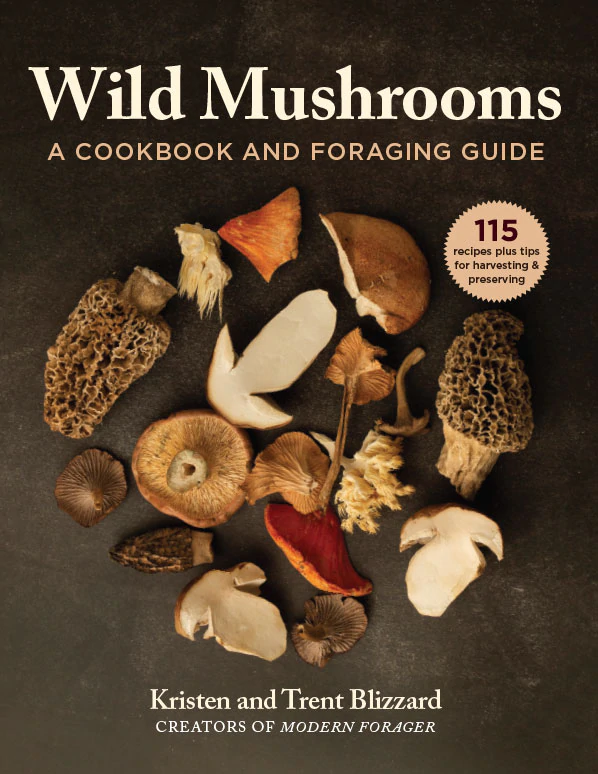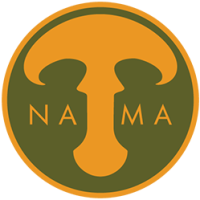A new mushroom cookbook from 2020, Wild Mushrooms: A Cookbook and Foraging Guide, is written by Kristen and Trent Blizzard (who run Modern Forager online.) It’s not only a cookbook, but also a story about foragers and our community.
After a quick review of the cover and a scan through the pages of the book, I want to dive right in. Design and layout have always been important to me, and the Blizzards and their graphic designers seem to have gotten most of it right with easytofind content, dynamic layouts, insets featuring mushroom foragers, and wellorganized recipes. The font colors and sizes are a bit much, but you could easily occupy your senses for hours just flipping through without even cooking at all.
This is definitely a “forest-to-table” kind of book, which is the title of the first chapter. Two other chapters cover preservation and cooking techniques, giving the reader an idea of what’s unique about cooking with mushrooms. Most of the chapters of the book cover individual species of popular foraged mushroom, allowing the reader to take a species they have found (or bought at the grocery store, perhaps?) and use it in a dish. About fourteen wellknown edible species are covered, but leaving out some of the lesspopular culinary wild mushrooms growing in our forests. Each chapter starts with a description of hunting and harvesting the species, how to work with it in the kitchen, and how to preserve it for later.
Scattered throughout the book are vignettes featuring established foragers across the US and their particular sphere of influence; this lays a lovely backdrop to the recipes and the reader’s experience making the dishes. It should be noted that most of the 115 recipes in the cookbook come from these foragercooks, making it more of a collective of mycocuisine than an expression of the Blizzards’ own glory in the kitchen. The approach works well to illustrate the relationships we build in our mycocommunity, but sometimes the overall “flavor arc” of the book gets a little lost since the recipes come from so many sources. In contrast to the older cookbook strategy of just adding mushrooms to alreadyflavorful dishes, this cookbook takes a step in the direction of celebrating the unique flavors of the mushrooms themselves.
I tried out about twelve of the book’s recipes using my own foraged mushrooms. Most recipes were successful, but a couple were less so. I really enjoyed the Lobster Mushroom and Butternut Squash Soup, and the Porcini and Gruyère Gougeres, and am sure to find additional gems as I cook through the book. A few of the recipes resulted in mushrooms that were overwhelmed by too much tomato sauce or other stronger flavors, but I’ll know next time to adjust the qualities to my own liking. I was pleased to find so many recipes for sweets, which tend to be the “undiscovered country” in mushroom cuisine.
If you are a new or seasoned mushroom forager and cook, this book is worth a read. It might be good for newbies who are finding their first edible mushrooms in the wilds of the US, and equally so for those who have foraged for and cooked with all the species for many years, but are looking for new recipes. For both kinds of cooks, the book offers the broader story about foraging for wild mushrooms and the community that has developed around it. Recommended!
Review by Derek Hevel, 2021


NAMA Store >